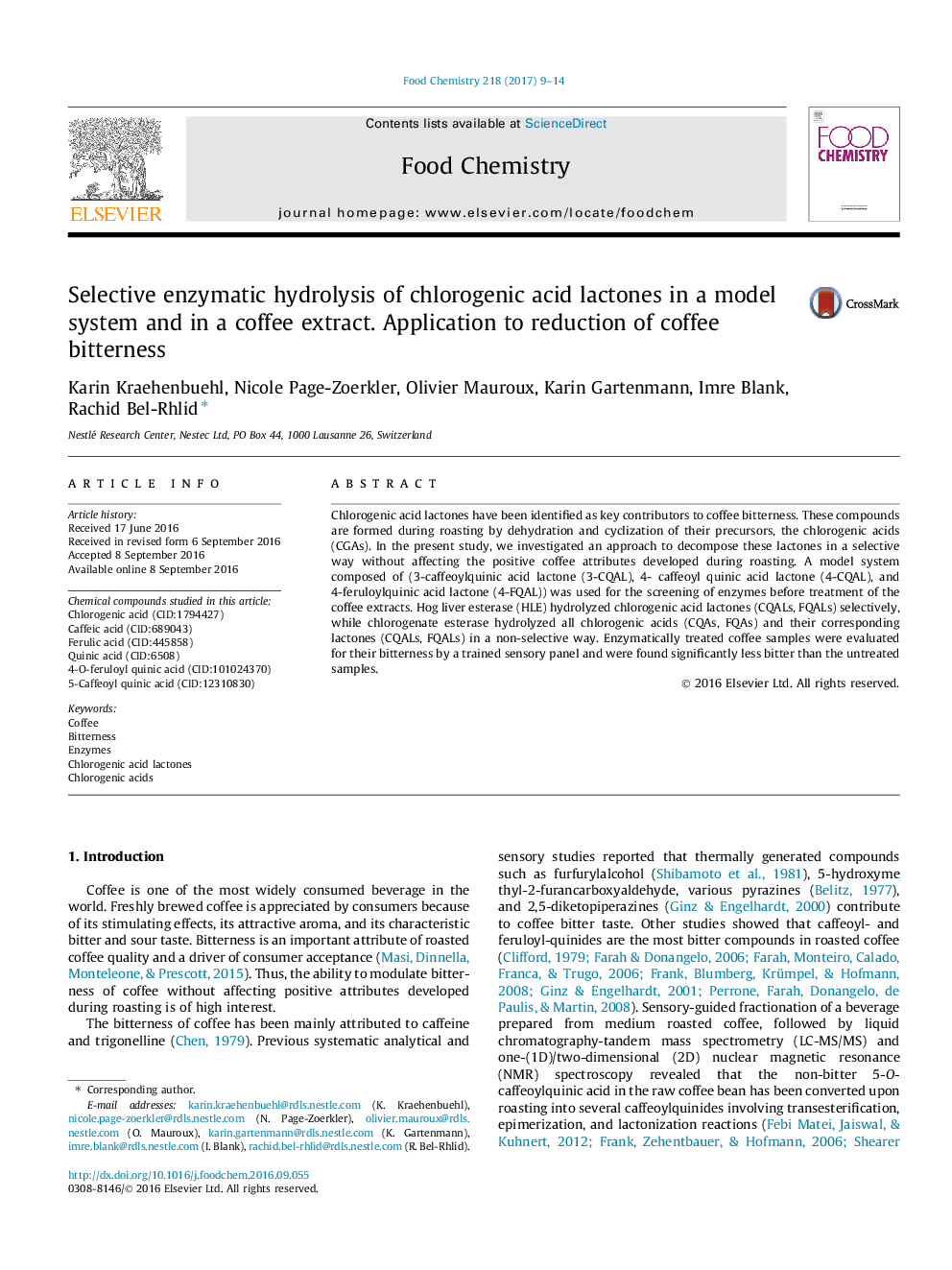| Article ID | Journal | Published Year | Pages | File Type |
|---|---|---|---|---|
| 5134035 | Food Chemistry | 2017 | 6 Pages |
â¢Reduction of coffee bitterness was significant with hog liver esterase.â¢Chlorogenic acid lactones were hydrolyzed by esterases and not by lipases.â¢Hog liver esterase hydrolyzed specifically chlorogenic acid lactones.â¢Potential use of specific enzymes to reduce the bitterness of coffee.
Chlorogenic acid lactones have been identified as key contributors to coffee bitterness. These compounds are formed during roasting by dehydration and cyclization of their precursors, the chlorogenic acids (CGAs). In the present study, we investigated an approach to decompose these lactones in a selective way without affecting the positive coffee attributes developed during roasting. A model system composed of (3-caffeoylquinic acid lactone (3-CQAL), 4- caffeoyl quinic acid lactone (4-CQAL), and 4-feruloylquinic acid lactone (4-FQAL)) was used for the screening of enzymes before treatment of the coffee extracts. Hog liver esterase (HLE) hydrolyzed chlorogenic acid lactones (CQALs, FQALs) selectively, while chlorogenate esterase hydrolyzed all chlorogenic acids (CQAs, FQAs) and their corresponding lactones (CQALs, FQALs) in a non-selective way. Enzymatically treated coffee samples were evaluated for their bitterness by a trained sensory panel and were found significantly less bitter than the untreated samples.
